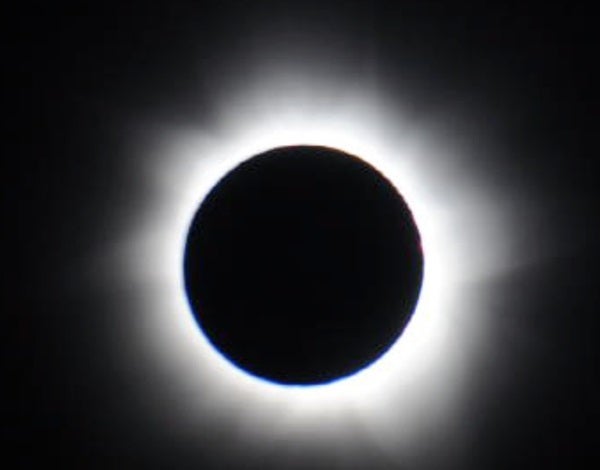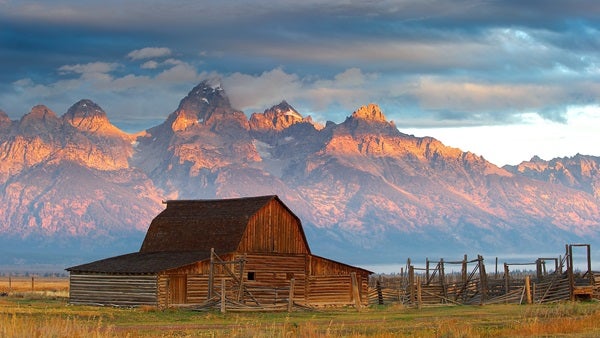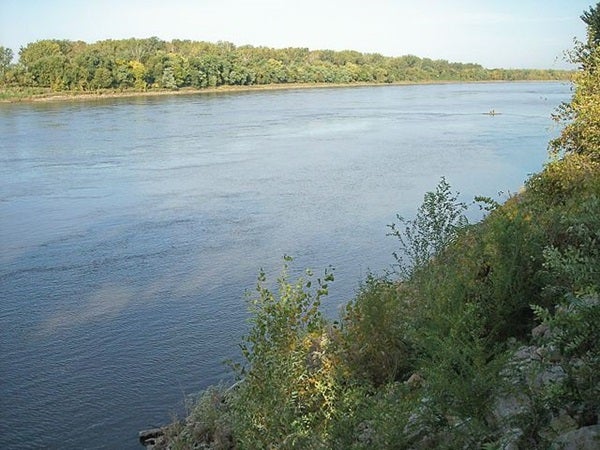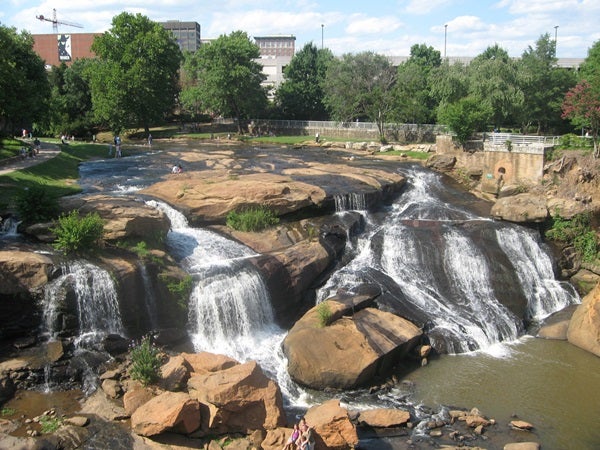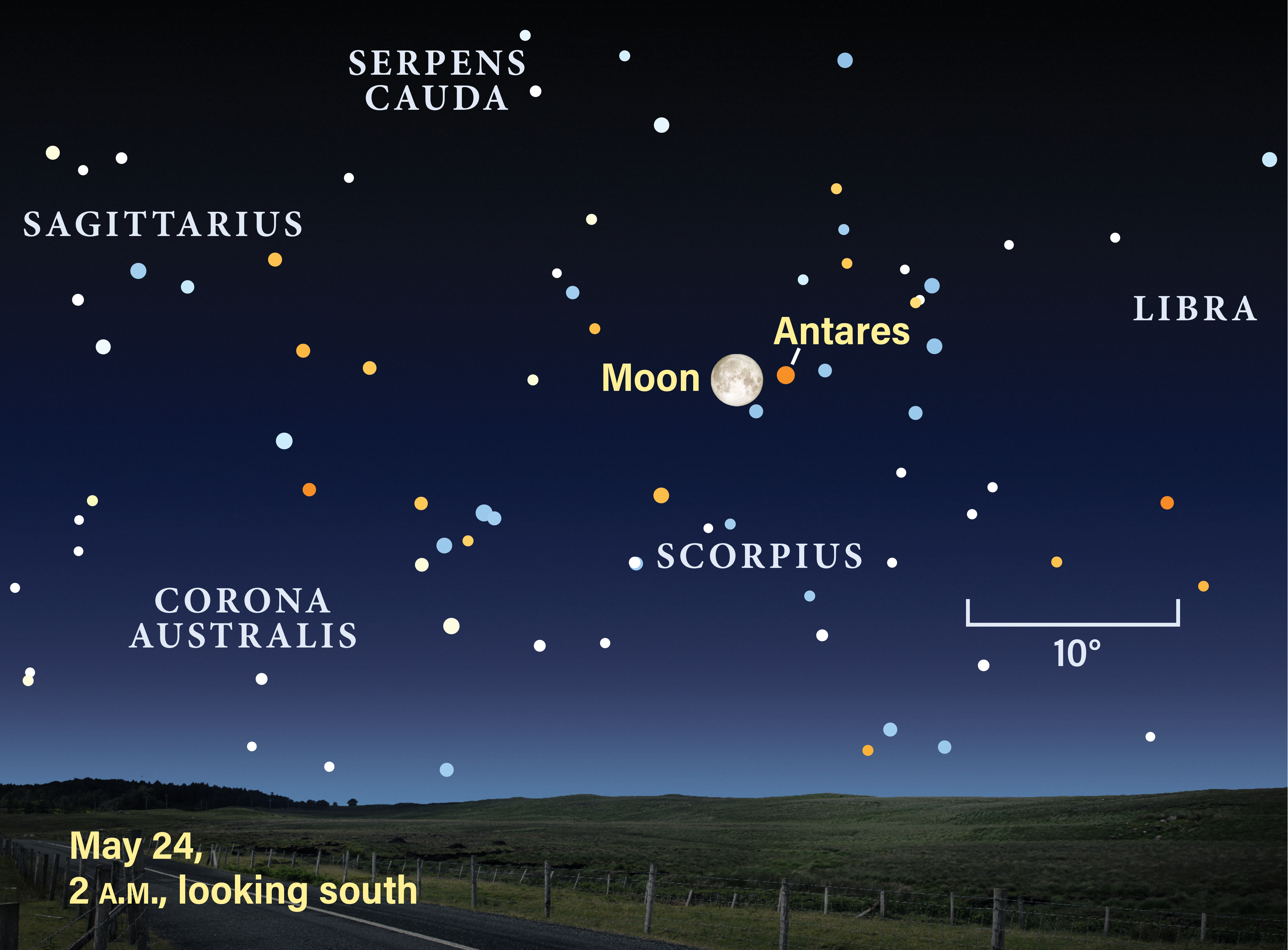The total solar eclipse that will happen August 21, 2017, will dazzle everyone who views it. Potential observers may have some questions, however. Where in the United States does totality happen? That’s easy to answer with a detailed map. Where are the best spots to view the event? That isn’t as straightforward.
Except for knowing that you want to be on, or at least near, the eclipse’s center line — where totality will last the longest — what makes for a good viewing location? Here are 20 sites you should consider, starting in the Northwest and working to the Southeast.
I do offer one suggestion when choosing a site: Carefully consider the population. All things being equal, a town of 10,000 is much more likely to have event-related problems than a city of 75,000. Traffic will be one of the primary issues. Small communities with one main road may suffer hours of gridlock. If you choose to head to such a location, get there early, perhaps even a day or two ahead of the eclipse. Remember: August 21, 2017, is a Monday. So the whole weekend beforehand will be free for most people.
1. Madras, Oregon
This town of some 6,500 residents lies 120 miles southeast of Portland, which itself sees a 99 percent partial eclipse. Close, but no cigar. Madras probably boasts the best weather prospects of any location within the path of totality. In August, the average precipitation is less than half an inch. I’m cautious about saying something like, “If you can get there, do it” because I’m not certain how many tourists the place can accommodate. Traffic on eclipse day, and even the weekend prior, may be brutal. Take a weeklong vacation there, however, and you’ll roll out of bed under the Moon’s shadow without a care in the world.
Eclipse starts: 9:06:47 a.m. PDT
Eclipse ends: 11:41:04 a.m. PDT
Maximum eclipse: 10:20:38 a.m. PDT
Sun’s altitude at maximum eclipse: 41.6°
Duration of totality: 2 minutes, 3 seconds
Width of the Moon’s shadow: 62.6 miles (100.8km)
2. Lime, Oregon
This location may be my most outlandish suggestion, but hear me out. Lime is an unincorporated community that once had a thriving manufacturing plant that produced lime. Big surprise, huh? These days, not many people stop by the abandoned town. For the eclipse, however, Lime has two advantages: stunningly good weather and easy access, right off Interstate 84.
Eclipse starts: 9:10:04 a.m. PDT
Eclipse ends: 11:47:55 a.m. PDT
Maximum eclipse: 10:25:54 a.m. PDT
Sun’s altitude at maximum eclipse: 44.9°
Duration of totality: 2 minutes,
10 seconds
Width of the Moon’s shadow: 64 miles (102.9km)
3. Smiths Ferry, Idaho
According to the 2010 census, this burg had a population of 75, so traffic problems could occur. Still, if you’re in western Idaho, this looks to be a great viewing site with easy access. Smith’s Ferry stands at an elevation of 4,554 feet (1,388m) and lies along Idaho State Highway 55 north of Boise.
Eclipse starts: 10:11:14 a.m. MDT
Eclipse ends: 12:50:11 p.m. MDT
Maximum eclipse: 11:27:42 a.m. MDT
Sun’s altitude at maximum eclipse: 45.9°
Duration of totality: 2 minutes, 11 seconds
Width of the Moon’s shadow: 64.4 miles (103.6km)
4. Terreton, Idaho
This unincorporated community of 1,100 people lies at an elevation of 4,790 feet (1,460m). Terreton is 35 miles northwest of Idaho Falls and is a two-hour drive to either West Yellowstone or Jackson Hole, Wyoming. It boasts great access from Interstate 15.
Eclipse starts: 10:14:57 a.m. MDT
Eclipse ends: 12:57:08 p.m. MDT
Maximum eclipse: 11:33:20 a.m. MDT
Sun’s altitude at maximum eclipse: 49°
Duration of totality: 2 minutes, 17 seconds
Width of the Moon’s shadow: 65.6 miles (105.5km)
5. Jackson, Wyoming
Although this seems like an ideal spot, lots of tour groups and individuals are heading here. This town of 9,577 inhabitants sits at an elevation of 6,311 feet (1,924m) and has a total area under 3 square miles. Jackson lies slightly south of the eclipse’s centerline, so if you drive north a few miles along U.S. Route 26, you’ll experience an extra 4 seconds of totality.
Eclipse starts: 10:16:43 a.m. MDT
Eclipse ends: 1:00:29 p.m. MDT
Maximum eclipse: 11:36:03 a.m. MDT
Sun’s altitude at maximum eclipse: 50.5°
Duration of totality: 2 minutes, 15 seconds
Width of the Moon’s shadow: 66.1 miles (106.3km)
Wyoming’s second-largest city had a population of 55,316 in 2010, and it has increased by some 5,000 since. Its elevation is 5,200 feet (1,585m). Because Casper offers more amenities than most places along the center line to its northwest, it will be the destination for vast numbers of visitors. Let’s hope its 27 square miles and 100 restaurants can handle them.
Eclipse starts: 10:22:17 a.m. MDT
Eclipse ends: 1:09:26 p.m. MDT
Maximum eclipse: 11:43:52 a.m. MDT
Sun’s altitude at maximum eclipse: 54°
Duration of totality: 2 minutes, 26 seconds
Width of the Moon’s shadow:
67.4 miles (108.5km)
7. Alliance, Nebraska
I’ve been asked where I’d view the eclipse if I were not hosting a huge event in St. Joseph, Missouri. My answer: Alliance. OK, not exactly in Alliance, but rather at Carhenge, a replica of Stonehenge built using 39 automobiles, just 3 miles north of the town along Nebraska Route 87. This attraction boasts great weather prospects, lots of open ground, and a modern (1987) construction that honors an ancient monument that marked the Sun’s position. My friends, for those of us interested in astronomy, it doesn’t get much better.
Eclipse starts: 10:27:09 a.m. MDT
Eclipse ends: 1:16:42 p.m. MDT
Maximum eclipse: 11:50:28 a.m. MDT
Sun’s altitude at maximum eclipse: 56.7°
Duration of totality: 2 minutes, 29 seconds
Width of the Moon’s shadow:
68.4 miles (110km)
8. Stapleton, Nebraska
If you’re looking for small-town charm, this burg with a population of 305 might just be for you. It lies at an elevation of 2,904 feet (885m), 29 miles north of Interstate 80 along U.S. Route 83, directly on the center line. Your best bet may be to stay in nearby North Platte, then drive north to Stapleton for the extra 50 seconds of totality.
Eclipse starts: 11:30:46 a.m. CDT
Eclipse ends: 2:21:54 p.m. CDT
Maximum eclipse: 12:55:18 p.m. CDT
Sun’s altitude at maximum eclipse: 58.5°
Duration of totality: 2 minutes, 33 seconds
Width of the Moon’s shadow:
68.9 miles (110.9km)
9. Grand Island, Nebraska
With a population of some 50,000, this city can handle quite an influx of eclipse watchers. Grand Island’s elevation is a bit lower than more westerly locations — 1,860 feet (567m) — but still high enough to offer a particulate-free sky. Just note that the south and southwestern edges of the city (where the center line intersects U.S. Route 34 or U.S. Route 30, respectively) offer ever-so-slightly longer totalities.
Eclipse starts: 11:34:19 a.m. CDT
Eclipse ends: 2:26:35 p.m. CDT
Maximum eclipse: 12:59:50 p.m. CDT
Sun’s altitude at maximum eclipse: 59.9°
Duration of totality: 2 minutes, 34 seconds
Width of the Moon’s shadow:
69.4 miles (111.8km)
10. St. Joseph, Missouri
(Rosecrans Memorial Airport)
Perhaps the largest single astronomy observing event ever will occur on eclipse day at Rosecrans Memorial Airport, which has space for more than 100,000 visitors. Although St. Joe is the fifth-largest city to fall under the Moon’s shadow, facilities will be strained. Luckily, Kansas City lies a scant 40 miles south. If you’re in the area, come join me. Do get there early.
Eclipse starts: 11:40:34 a.m. CDT
Eclipse ends: 2:34:28 p.m. CDT
Maximum eclipse: 1:07:39 p.m. CDT
Sun’s altitude at maximum eclipse: 61.9°
Duration of totality: 2 minutes, 38 seconds
Width of the Moon’s shadow:
70.1 miles (112.9km)
11. Columbia, Missouri
(UM Stadium)
Another huge event will occur in the Show Me State when astronomer Angela Speck hosts the public at Faurot Field at Memorial Stadium, where the University of Missouri football team plays. This facility has a capacity of 75,982. She’s also setting up ancillary sites to accommodate the expected quarter-million visitors that day all around the city.
Eclipse starts: 11:45:41 a.m. CDT
Eclipse ends: 2:40:15 p.m. CDT
Maximum eclipse: 1:13:41 p.m. CDT
Sun’s altitude at maximum eclipse: 62.9°
Duration of totality: 2 minutes, 37 seconds
Width of the Moon’s shadow:
70.6 miles (113.6km)
St. Louis lies on the northeastern edge of the eclipse path, so it won’t offer much in the way of length of totality. Instead, head southwest roughly 50 miles via Interstate 44 to the center line in St. Clair, a town of some 5,000 residents. If you can book a room there, great. If not, St. Louis offers thousands.
Eclipse starts: 11:48:33 a.m. CDT
Eclipse ends: 2:43:29 p.m. CDT
Maximum eclipse: 1:17:04 p.m. CDT
Sun’s altitude at maximum eclipse: 63.4°
Duration of totality: 2 minutes, 40 seconds
Width of the Moon’s shadow:
70.8 miles (114km)
13. Carbondale, Illinois
Although this city of nearly 30,000 lies slightly off the center line, I offer it as a choice because it’s much larger than the burgs around it that are on the center line. Positioned near the eclipse’s greatest duration, Southern Illinois University will host events headed by physics department staff member Bob Baer.
Eclipse starts: 11:52:27 a.m. CDT
Eclipse ends: 2:47:30 p.m. CDT
Maximum eclipse: 1:21:26 p.m. CDT
Sun’s altitude at maximum eclipse: 63.7°
Duration of totality: 2 minutes, 38 seconds
Width of the Moon’s shadow:
71.1 miles (114.4km)
14. Makanda, Illinois
(Giant City State Park)
I like bearing good news and don’t much care to announce bad news. This attraction has the longest duration of totality anywhere. That’s the good news. The bad news is that Makanda has a population of 561, and thousands of unknowing eclipse watchers, hoping to be in the spot that offers the longest duration of totality, surely will flock there. Repeat after me: “Gridlock!”
Eclipse starts: 11:52:33 a.m. CDT
Eclipse ends: 2:47:43 p.m. CDT
Maximum eclipse: 1:21:37 p.m. CDT
Sun’s altitude at maximum eclipse: 63.8°
Duration of totality: 2 minutes, 40 seconds
Width of the Moon’s shadow: 71 miles (114.3km)
15. Cerulean, Kentucky
This unincorporated community has a population of about 400. It’s easy to reach, it has essentially the longest duration of totality, and, most importantly, many people may overlook it as a prime site. Oh, and be sure to note this: If you plan to observe totality anywhere in Kentucky, you’ll be in the Central Time Zone. Although most of the state observes Eastern Time, those locations will see only a partial eclipse.
Eclipse starts: 11:56:01 a.m. CDT
Eclipse ends: 2:51:12 p.m. CDT
Maximum eclipse: 1:25:27 p.m. CDT
Sun’s altitude at maximum eclipse: 63.9°
Duration of totality: 2 minutes, 40 seconds
Width of the Moon’s shadow:
71.2 miles (114.6km)
16. Hopkinsville, Kentucky
An aggressive ad campaign by astronomy enthusiasts, paired with one of the longest totality times, means this city of nearly 35,000 residents better prepare itself. It does boast easy access: Just take U.S. Route 68 roughly 17 miles east from where it meets Interstate 24.
Eclipse starts: 11:56:33 a.m. CDT
Eclipse ends: 2:51:43 p.m. CDT
Maximum eclipse: 1:26:02 p.m. CDT
Sun’s altitude at maximum eclipse: 63.9°
Duration of totality: 2 minutes, 40 seconds
Width of the Moon’s shadow:
71.2 miles (114.6km)
Although Nashville is the single largest city that lies within the path of totality, I recommend you take U.S. Route 31E northeast 29 miles to Gallatin. Why? Because depending on where you start in Nashville, you’ll gain up to nearly 1 minute of totality. For an extra minute of totality, I would walk the 29 miles. So would just about everyone I know who has experienced a total solar eclipse. So worth it!
Eclipse starts: 11:59:04 a.m. CDT
Eclipse ends: 2:54:11 p.m. CDT
Maximum eclipse: 1:28:47 p.m. CDT
Sun’s altitude at maximum eclipse: 63.9°
Duration of totality: 2 minutes, 40 seconds
Width of the Moon’s shadow:
71.3 miles (114.7km)
18. Sparta, Tennessee
This town of 5,100 people should prove a relatively quiet setting from which to observe the eclipse. If you like regional history and gorgeous buildings, this might just be your spot.
Eclipse starts: 12:01:31 p.m. CDT
Eclipse ends: 2:56:29 p.m. CDT
Maximum eclipse: 1:31:24 p.m. CDT
Sun’s altitude at maximum eclipse: 63.7°
Duration of totality: 2 minutes, 39 seconds
Width of the Moon’s shadow:
71.4 miles (114.8km)
19. Greenville, South Carolina
Although this city of more than 62,000 residents lies within the path of the Moon’s shadow, if you head 28 miles southwest to anywhere near the intersection of state Route 81 and Interstate 85, you’ll gain nearly half a minute of totality.
Eclipse starts: 1:08:59 p.m. EDT
Eclipse ends: 4:03:01 p.m. EDT
Maximum eclipse: 2:39:03 p.m. EDT
Sun’s altitude at maximum eclipse: 62.8°
Duration of totality: 2 minutes, 37 seconds
Width of the Moon’s shadow:
71.5 miles (115km)
20. Columbia, South Carolina
This city of some 135,000 is sure to be the destination of tens to hundreds of thousands of hopeful eclipse chasers from locations up and down the Eastern Seaboard. And it might be one of the few spots able to handle such numbers. It also has the least favorable weather prospects, so start paying careful attention to forecasts up to a week before the event.
Eclipse starts: 1:13:08 p.m. EDT
Eclipse ends: 4:06:21 p.m. EDT
Maximum eclipse: 2:43:07 p.m. EDT
Sun’s altitude at maximum eclipse: 61.9°
Duration of totality: 2 minutes, 30 seconds
Width of the Moon’s shadow: 71.5 miles (115km)

